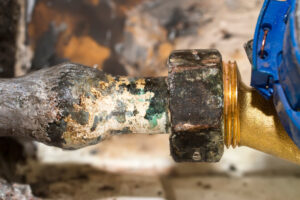On May 5, the California Division of Occupational Safety and Health (Cal/OSHA) announced the availability of new guidance clarifying the state’s updated lead exposure prevention standards for construction.
Cal/OSHA’s amended lead standards for the construction industry went into effect January 1. The amended standards require employers to perform exposure assessments for employees who may be exposed to lead at the worksite, including employees who perform dry abrasive blasting, to determine their actual exposure.
Until an assessment can be performed and employers determine employees’ actual exposure, the maximum amount of time employees can conduct dry abrasive blasting is limited to five hours per day. After January 1, 2030, the limit drops to two hours a day.
Once the employer has performed a required exposure assessment, there’s no limit on the maximum amount of time employees may conduct abrasive blasting. However, employers must ensure employee exposures are below the permissible exposure limit, considering the protection provided by employees’ respirator use.
Until January 1, 2030, the permissible exposure limit for abrasive blasting is 25 micrograms of lead per cubic meter of air. After January 1, the permissible exposure limit is 10 micrograms per cubic meter.
The construction industry lead exposure standard applies whenever employees performing construction work are occupationally exposed to lead and aren’t covered by the general industry standard.
Construction work is defined as work for construction, alteration, and/or repair, including painting and decorating, and includes:
- Demolition or salvage of structures in which lead or materials containing lead are present;
- Removal or encapsulation of materials containing lead;
- New construction, alteration, repair, or renovation of structures, substrates, or portions of structures that contain lead or materials containing lead;
- Installation of products containing lead;
- Lead contamination/emergency cleanup;
- Transportation, disposal, storage, or containment of lead or materials containing lead at a site or location where construction activities are performed; and
- Maintenance operations associated with construction activities.
Work where employees are most at risk of exposures includes carpentry, demolition, electrical, heating and air conditioning maintenance and repair, iron work, lead-based paint abatement, painting and painting prep, plumbing, remodeling, and renovation. Painters, plumbers, and welders are among the workers most exposed to lead.
Workers at the highest risk of lead exposure are those involved in “Level 3 trigger tasks,” which include:
- Using lead-containing mortar;
- Lead burning; and
- Tasks that can expose a worker to lead-containing coatings or paint, such as abrasive blasting, abrasive blasting enclosure movement and removal, cleanup activities for which dry expendable abrasives are used, grinding or sanding without dust collection systems, power tool cleaning, rivet busting, torch burning and cutting, and welding.
Other recently updated Cal/OSHA resources include:
- Lead Exposure Prevention in Construction webpage
- Lead in construction guide for employers
- Construction Lead Standard: What Employers Need to Know—Executive Summary
- Lead in Construction: Information for Workers fact sheet
The amended California Lead in Construction standard emphasizes an increased use of protective measures like substitution, engineering controls, and administrative controls.

